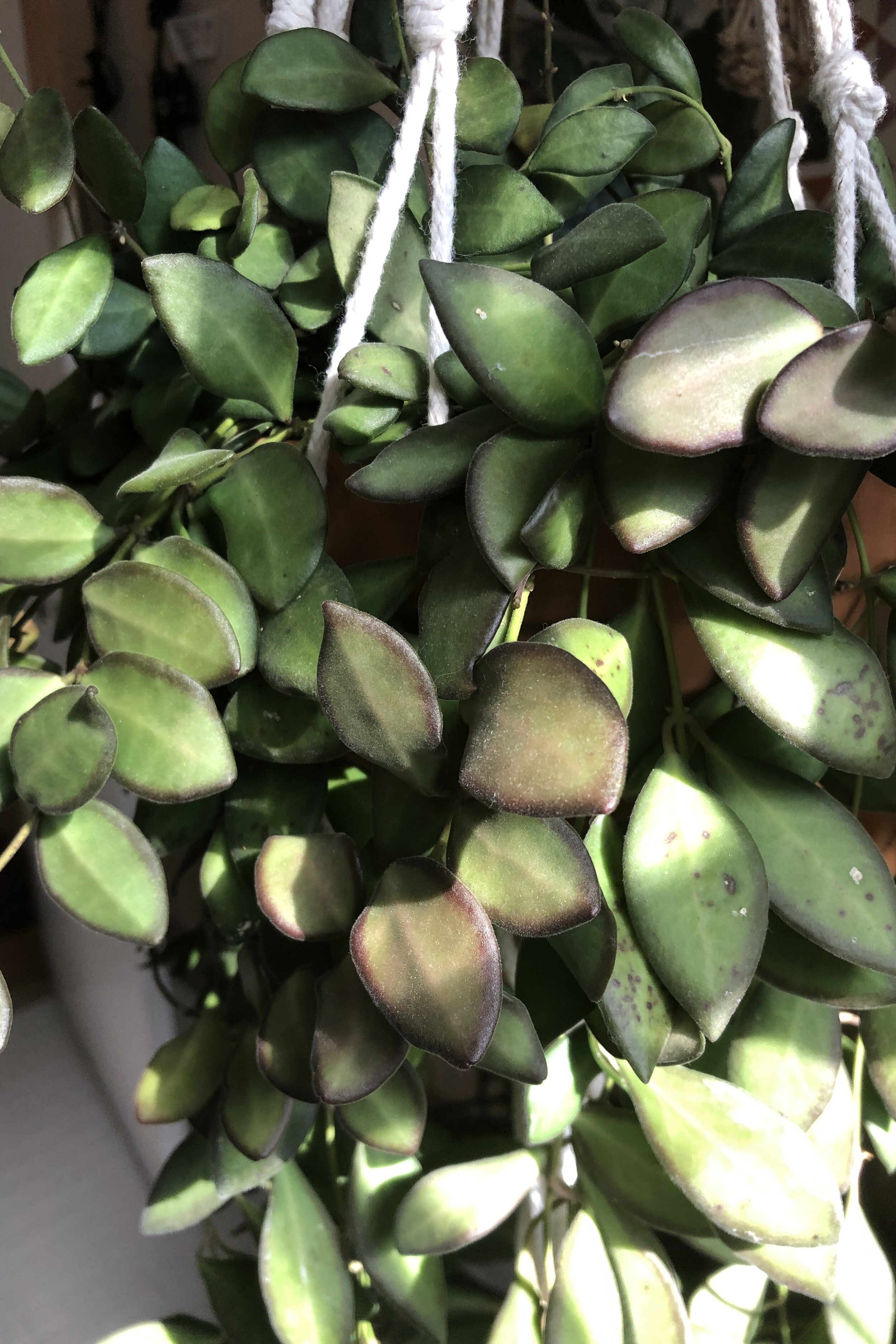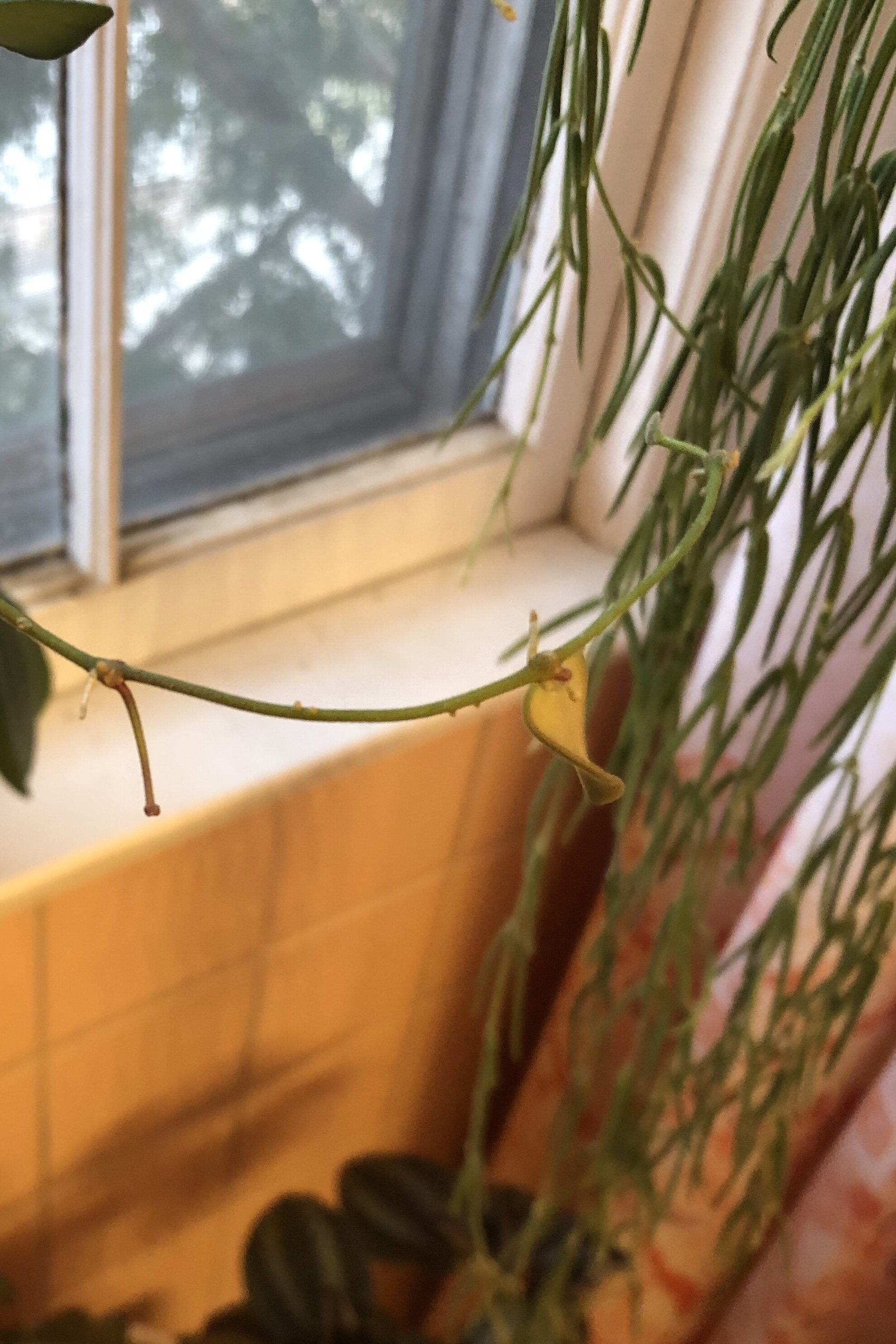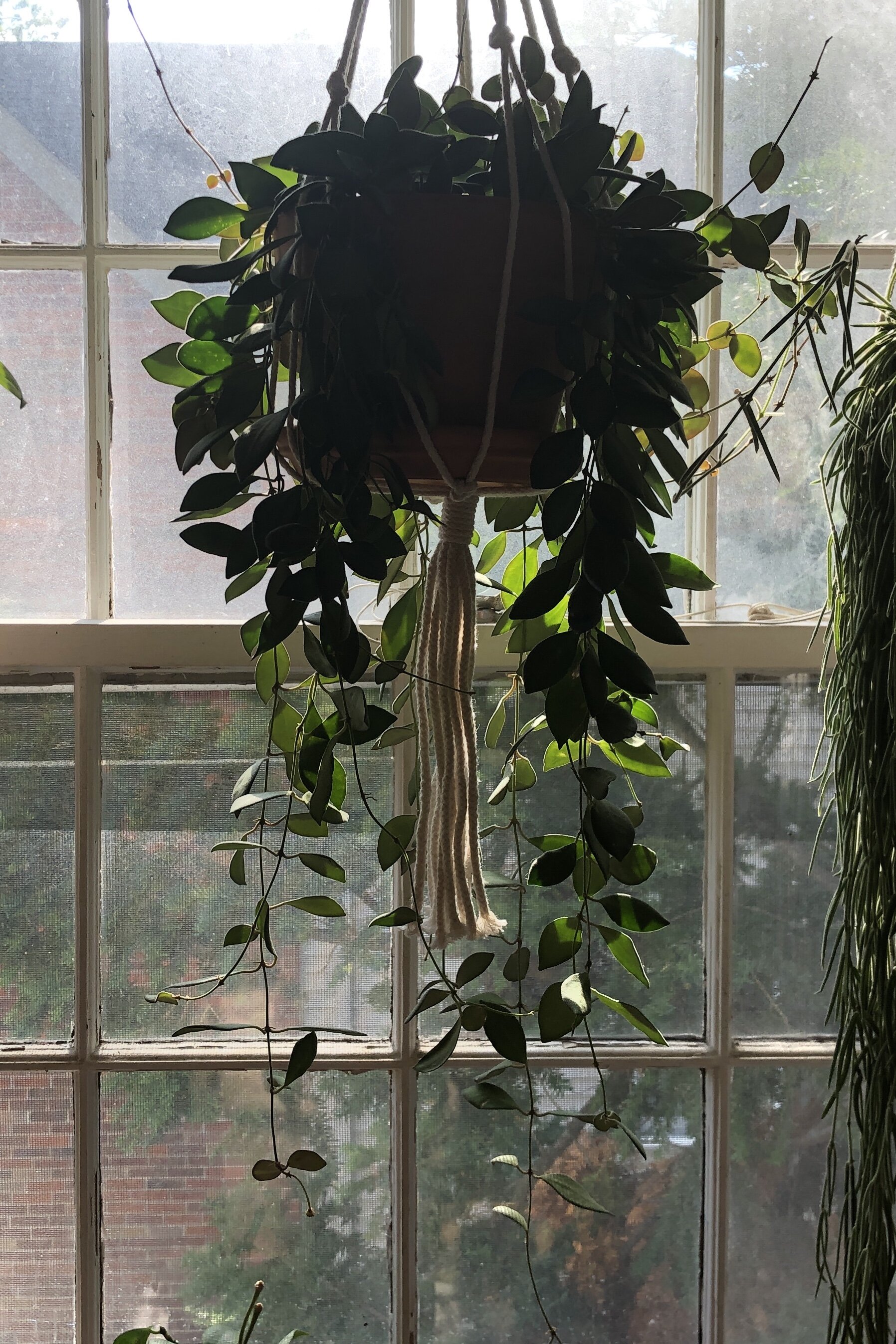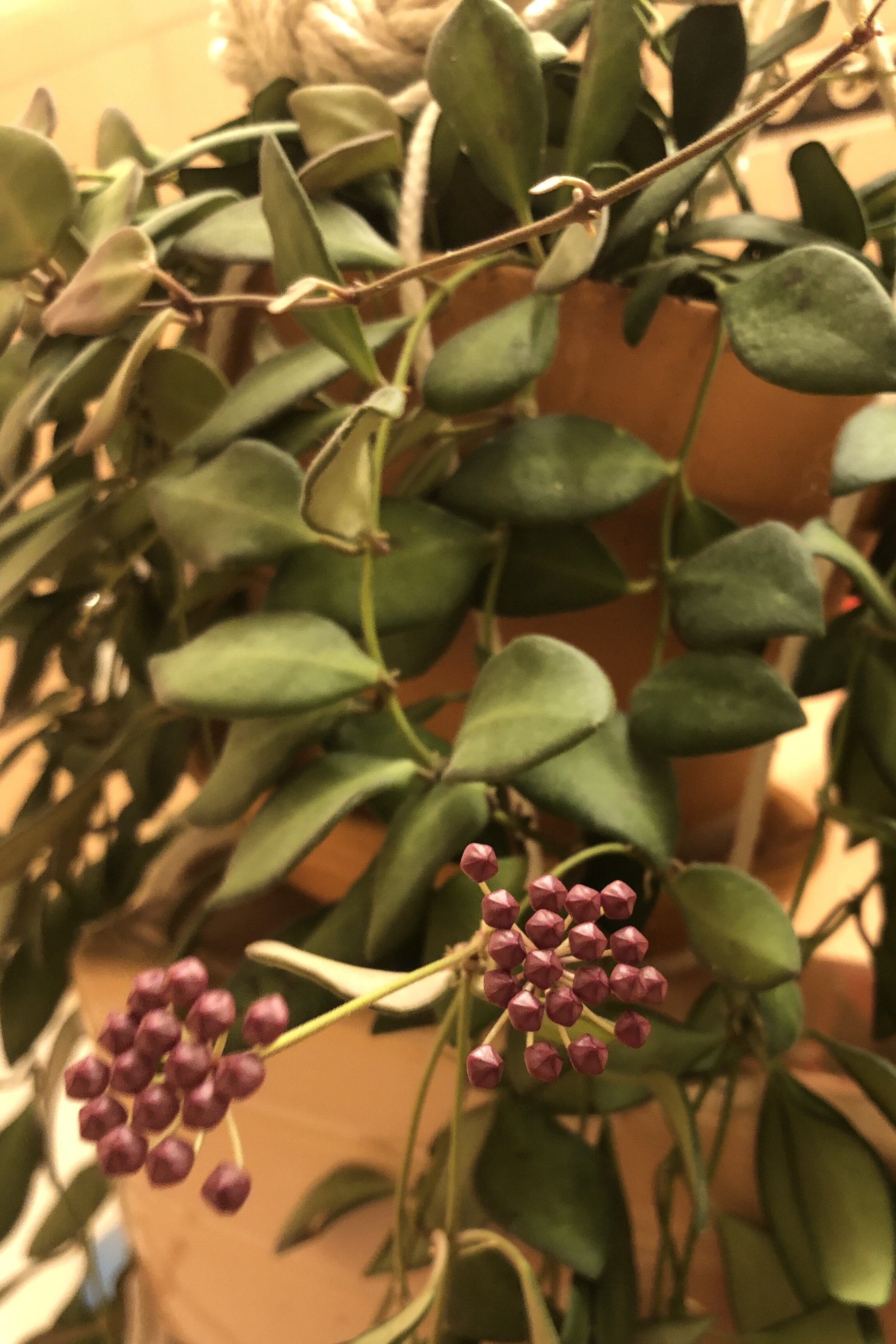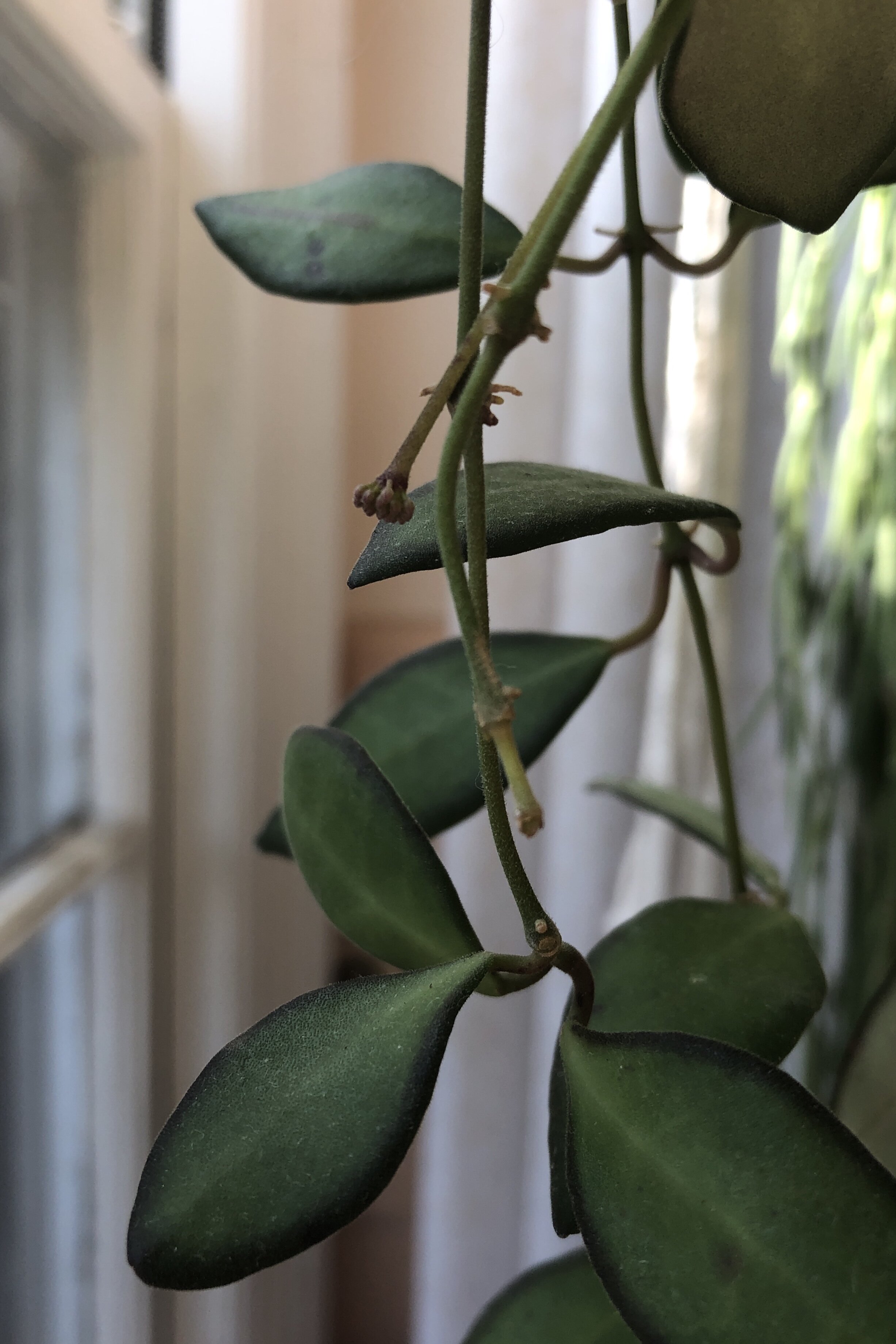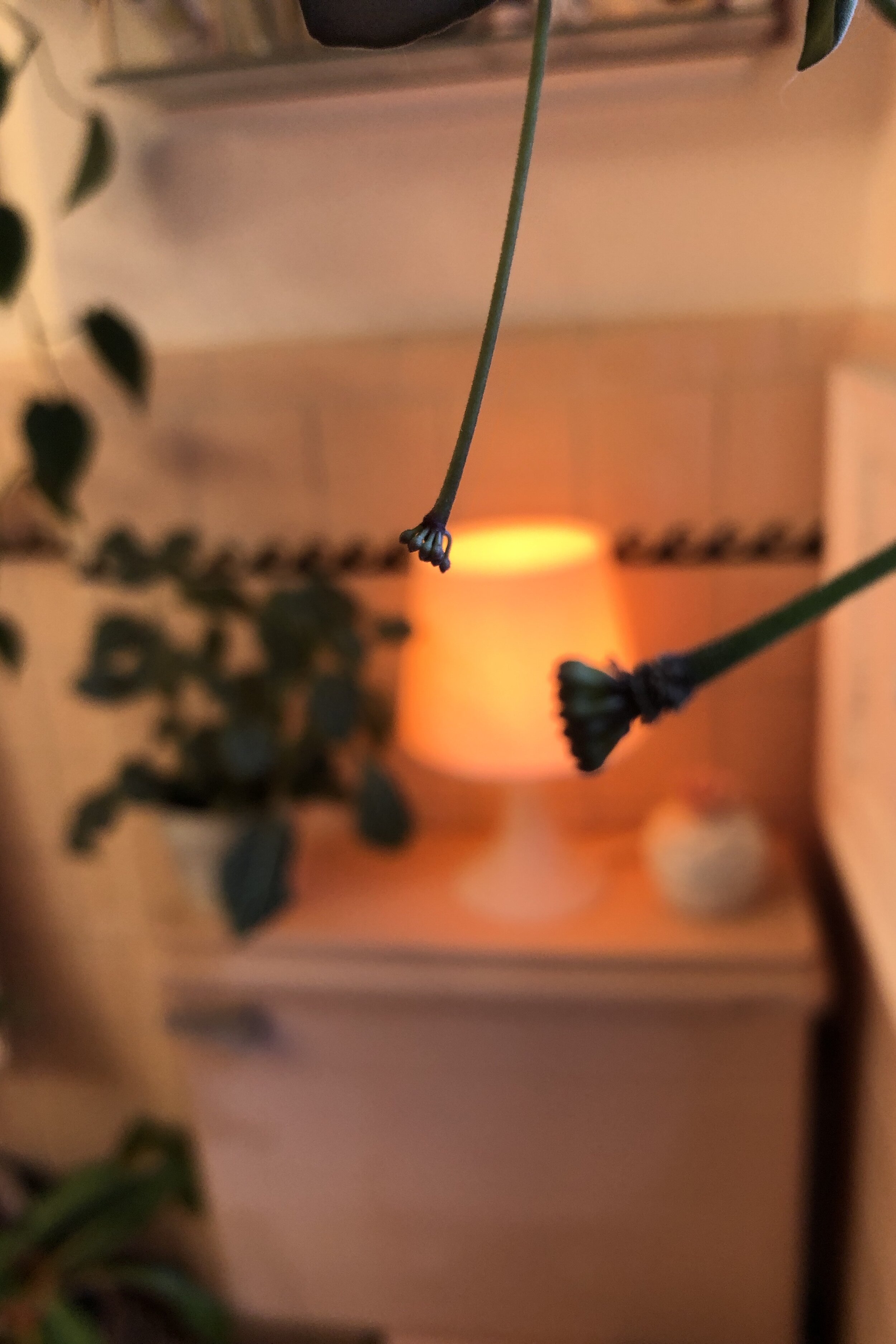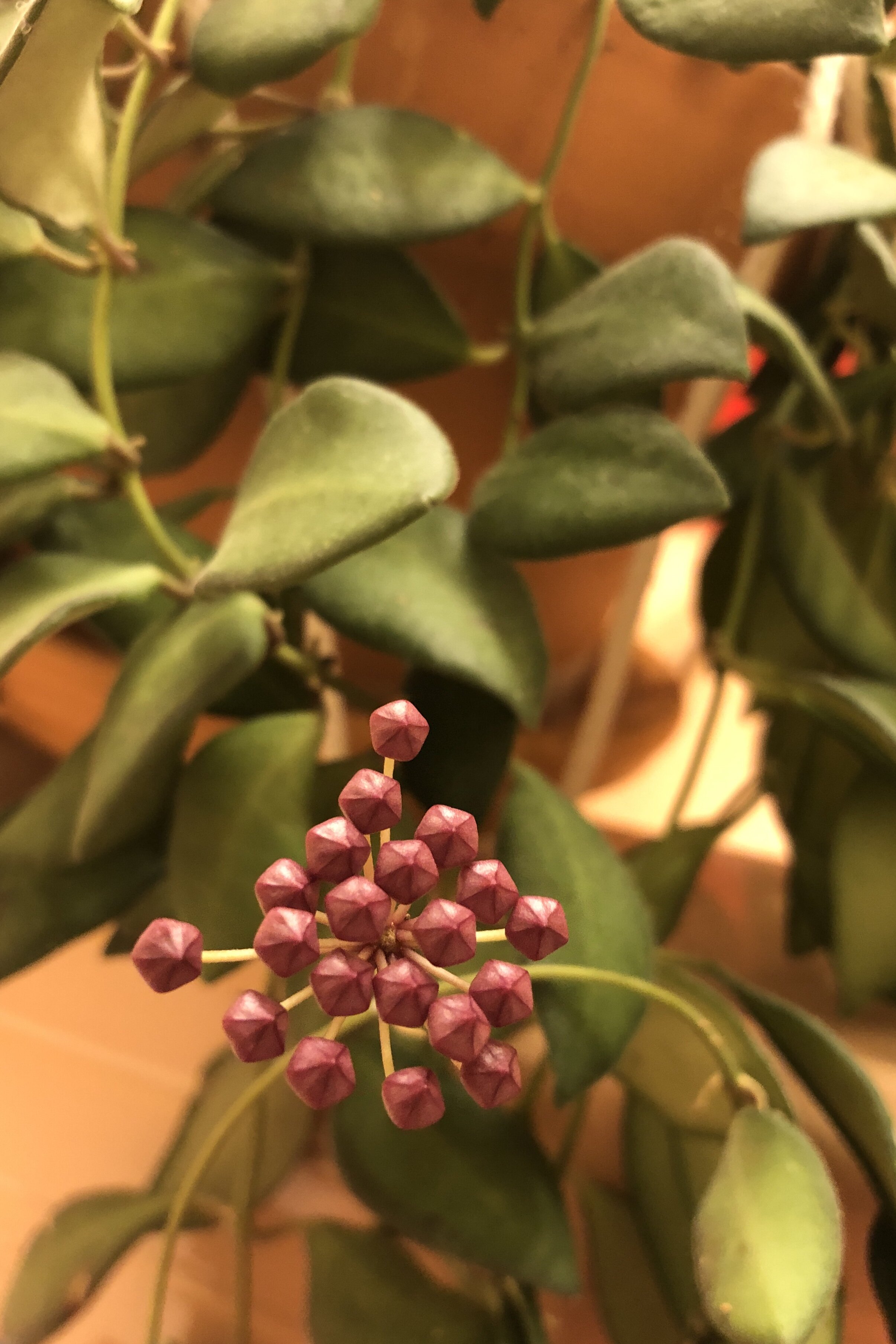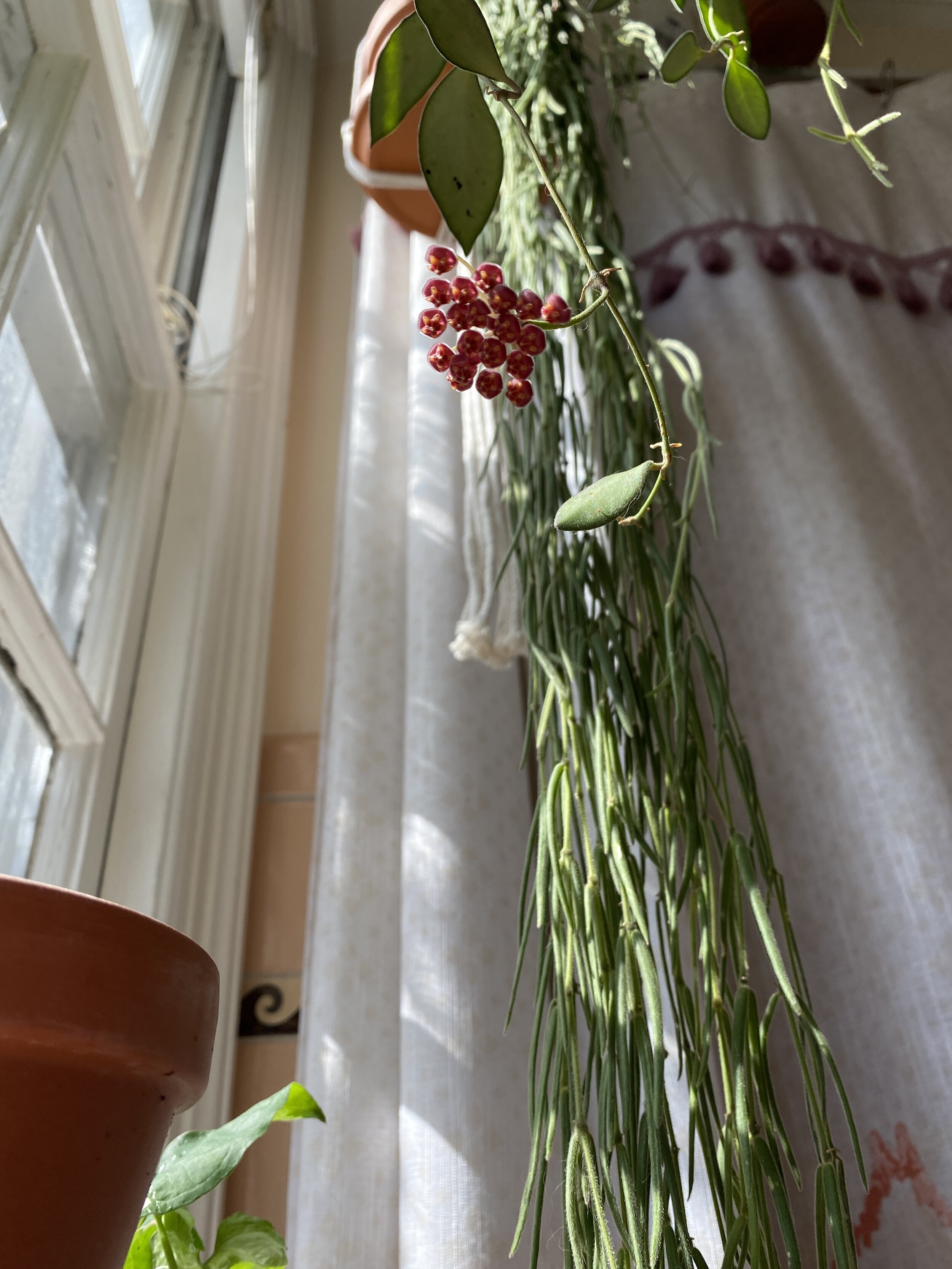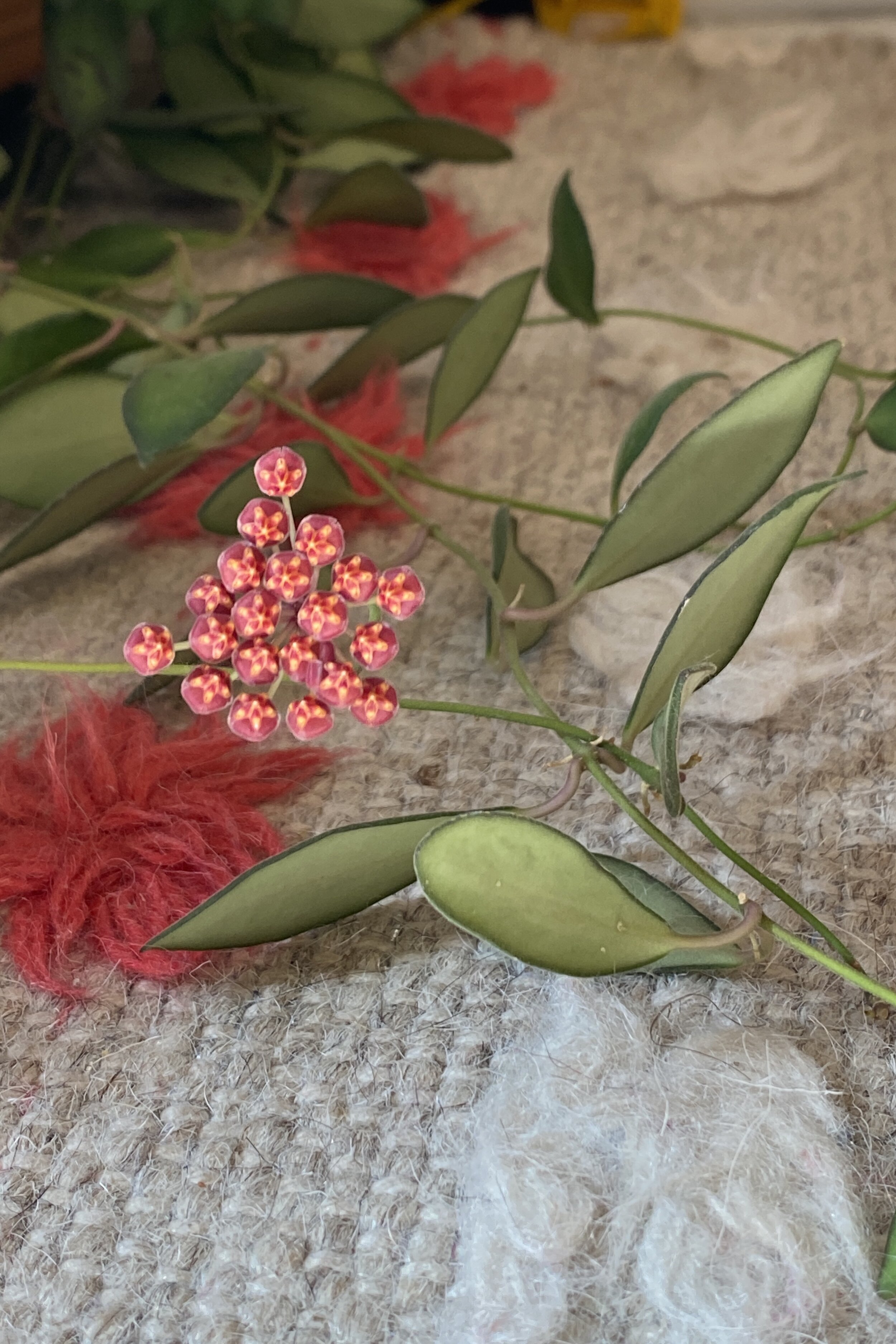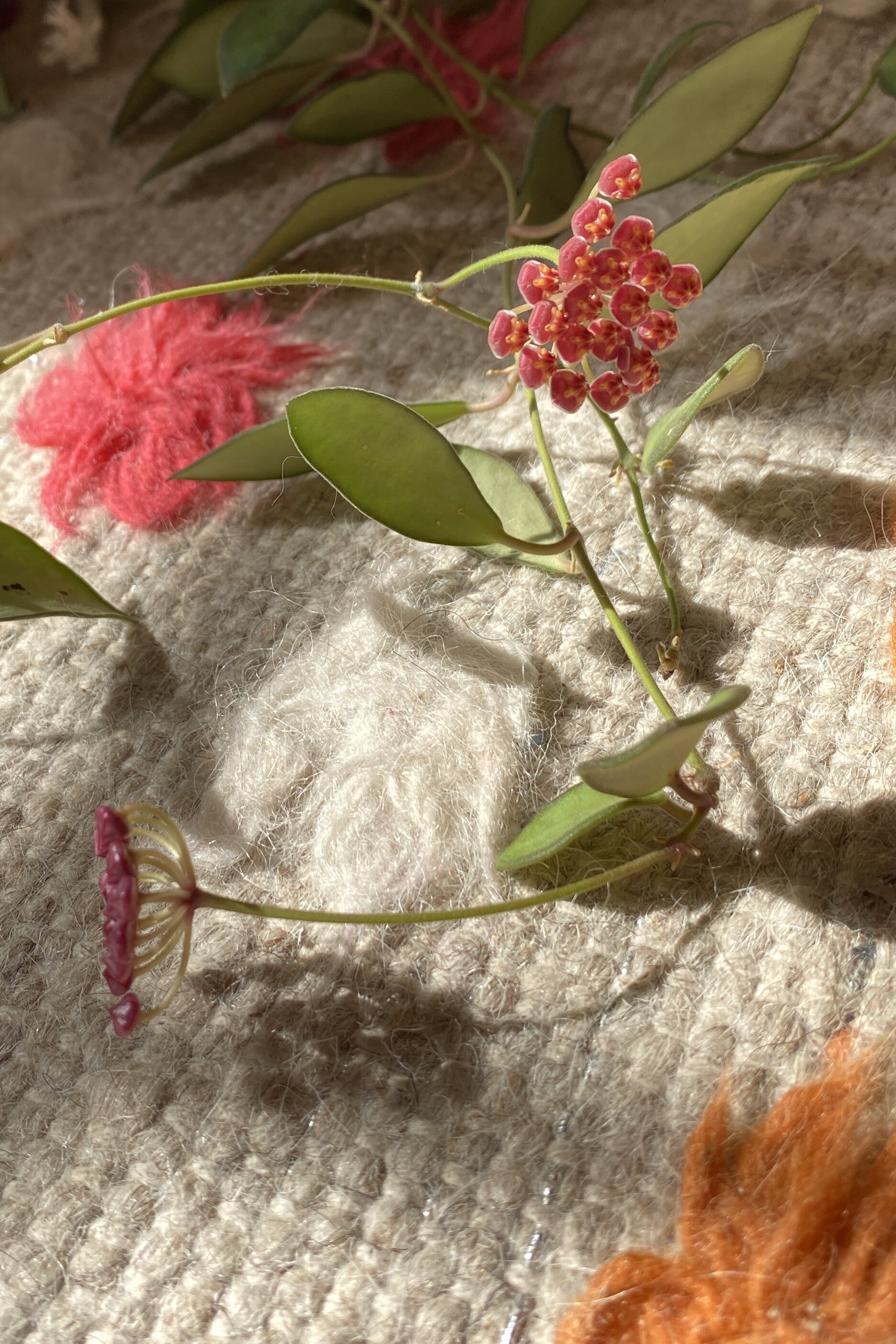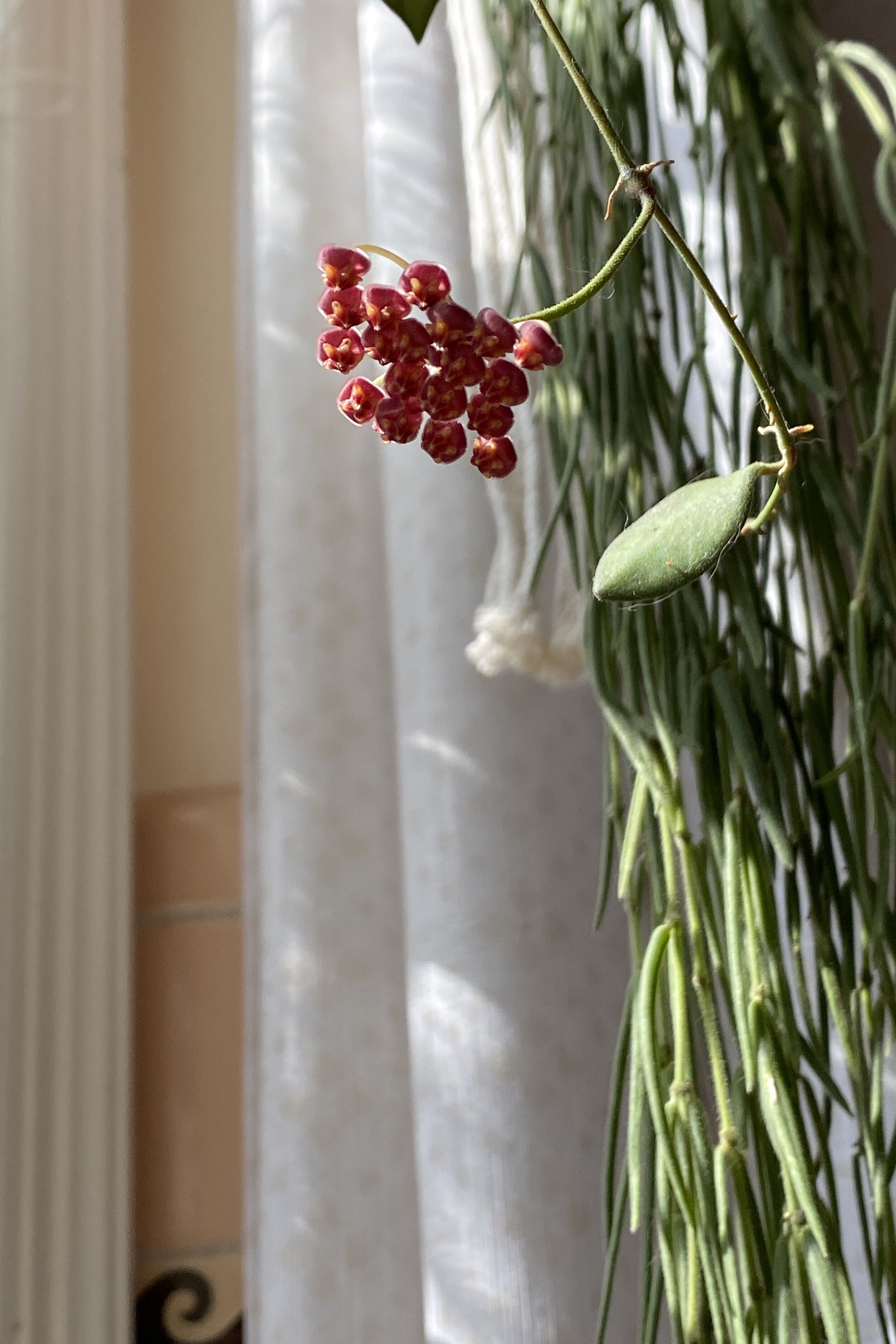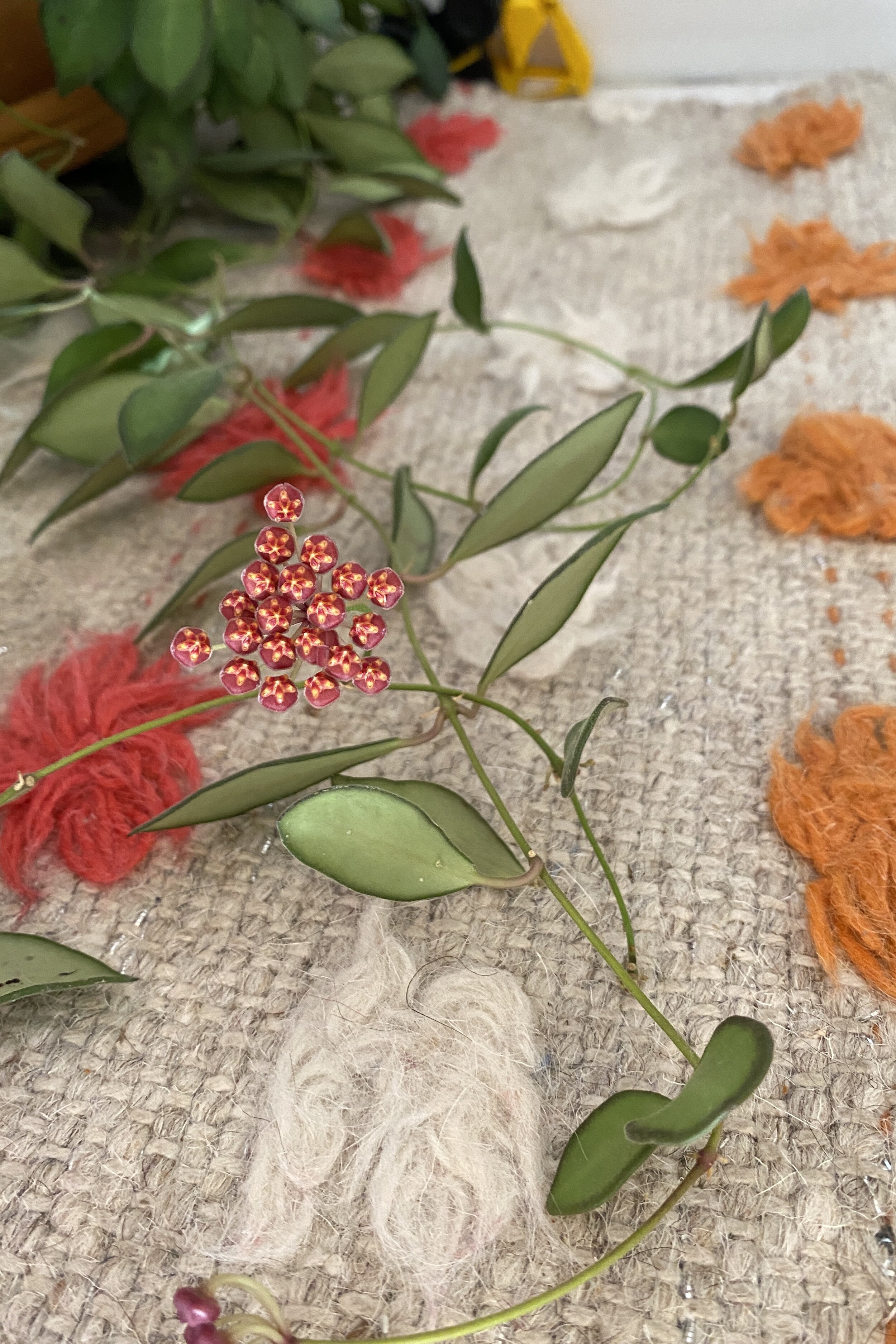The Story on Hoya Sp. Aff. Burtoniae.
Hi All,
We have a lot of information to cover here today! Feel free to reach out to me on Instagram or the comment section below if necessary! Let’s get started!
Hoya Sp. Aff. Burtoniae is an abbreviation for Hoya Species Affinity Burtoniae.
So much confusion over one plant name...well, three plant names. Maybe more. As with many topics in the plant community, the name of this plant differs based on who you ask. It has been available for some time in the big box stores, and for good reason. It’s a fast grower, it looks adorable in a hanging basket, and it isn’t fussy. I can’t really think of a reason not to love this plant, except for maybe the drama over it’s true identity. When I purchased this plant, it came with both Hoya Bilobata and Hoya DS-70 on the ID tag. ...But Hoya DS-70 and Hoya Bilobata are two different plants. I asked around, and many of my plant friends have also seen this tag in the big box and concur that the label gives two names for two separate plants. It might not matter to some, but for plant freaks like me, knowing a name means knowing so much more. It means knowing the history and native environment of the plant, it means being able to compare notes with fellow plant freaks, and it means understanding care needs.
As always, I’ve done a little research, and I’m going to give you a few tips on how to differentiate Hoya Bilobata and Hoya sp. aff. Burtoniae. We’ll touch on DS-70 too. It wouldn’t be a proper investigation if we didn’t mention Hoya Tsangii as well, whose name has been thrown around in this plant identity crisis, too. Finally, we’ll discuss some buying tips for these four plants that are often sold interchangeably despite being different plants. Care and bloom tips for Hoya Sp. Aff. Burtoniae are at the end, so feel free to skip ahead if you’re at peace with the identity of your Hoya.
First, let’s eliminate Hoya Tsangii as a name and identity. Both Hoya Tsangii and Hoya Sp. Aff. Burtoniae are from the Philippines (You can check out some info on the growing conditions in the Philippines in my blog post on Hoya Krohniana). We’ve got a lot to cover here today and we won’t be going too deep on how the environment in the Philippines effects the care of this plant. As far as Hoya Tsangii is concerned, Hoya Sp. Aff. Burtoniae being the “true” Hoya Tsangii has been debunked. There was a misunderstanding when Hoya Tsangii was named and it resulted in H. Sp. Aff. Burtoniae mistakenly being confused for Hoya Tsangii. If you look at a side-by-side of Hoya Tsangii and H. Sp. Aff. Burtoniae, you won’t see much of a resemblance.
As for Hoya Bilobata, it’s more understandable that these two plants could be confused on a surface level. There are, however, some differences. The first is in the foliage. Hoya Bilobata is not pubescent. The leaves are smooth. If you were to touch a leaf from Hoya Sp. Aff. Burtoniae you would feel a soft fuzz, or pubesence, to the leaves. The leaves of Hoya Bilobata are smaller and more round. Hoya Sp. Aff. Burtoniae and Hoya Bilobata both have olive green foliage. This, of course, can vary depending upon the light exposure the plant gets from its environment. Hoya Sp. Aff. Burtoniae can have a reddish cast to the leaves in higher light and a dark ring around the edges of each leaf (see photo above for an example). The vines of Hoya Bilobata have more of a twining habit than those of Hoya Sp. Aff. Burtoniae, which is more suited to hanging. The second difference is in the flowers. Both of these plants have among the tiniest Hoya flowers. They look similar, but there are differences between them. Hoya Bilobata has smaller flowers than Hoya Sp. Aff. Burtoniae. Hoya Bilobata will have pink flowers with a darker pink and slightly yellow center, but Hoya Sp. Aff. Burtoniae has dark pink to reddish flowers with a yellow center. Look for the pubescence on the leaves as a major tell between these two plants if they aren’t in bloom.
Hoya Burtoniae(no sp. aff.) is another plant that often gets mistaken for Hoya Sp. Aff. Burtoniae and there’s more merit to this one. This is where things get tricky. In fact, there are enough similarities between H. Sp. Aff. Burtoniae and Hoya Bertoniae that H. Sp. Aff. Burtoniae is basically named “the Hoya species that’s a lot like Hoya Burtoniae.” This suggests that it could receive a unique name one day…or it might not. I’m sure there are many hoping that it will so that the confusion is cleared up. As for the two plants, the leaves and vines are similar. One difference between the two is the cluster of flowers. Hoya Bertoniae flowers spread out so that the cluster is much larger than Hoya Sp. Aff. Burtoniae’s more compact cluster. Both are red with yellow centers, so the shape and overall size of the cluster is where we see the difference.
Hoya DS-70 has been a tougher nut to crack. It seems that there is a true Hoya DS-70 out there, but it isn’t common or easily found. It’s likely that many Hoya DS-70 available for sale are not, in fact, Hoya DS-70. I spoke with an established and reputable expert who is experienced regarding DS-70 and Hoya Sp. Aff. Burtoniae. We didn’t get into the specific differences in the foliage and flowers, but we did get into the mess that’s come from this plant having so many mistaken identities. I was able to verify that the plants being sold in many stores labeled as “Bilobata/DS-70” are, with near certainty, Hoya Sp. Aff. Burtoniae. The true DS-70, Bilobata, Tsangii and even Burtoniae are not common plants and unless you’re buying from a known and reputable seller who is aware of the differences between these plants, you risk buying a mislabeled plant. The names, with the exception perhaps of Hoya Tsangii, are erroneously used interchangeably by sellers which has led to confusion among plant lovers.
Tips for Buying:
-If you’re looking to purchase Hoya Bilobata at a big box store, check the leaves for pubescence. If you feel fuzzy leaves instead of smooth waxy leaves, you’ve found Hoya Sp. Aff. Burtoniae.
-If you are buying any of the species listed in this article online, don’t be afraid to message the seller and ask questions. What do the leaves feel like? Has this plant or the mother plant bloomed? What do the blooms look like? Plant identification can be a quagmire, and online sellers worth their salt will want to ensure that you get the species you want to buy.
-Buying from a reputable nursery is key. Many sellers, even if they have high ratings on their platforms, do not have to abide by the same rules and regulations that a licensed nursery would. Nurseries require licensure in good standing, and the confidence of the buyer is just one of many reasons why that license has value.
-If possible, buying locally is wise. You can touch, see and assess the plant yourself rather than looking at a photo or taking someone’s word.
-Hoya DS-70, Hoya Bilobata, Hoya Tsangii, and to a lesser extent, Hoya Burtoniae are not exactly flooding the plant market. You can find them, but not as easily as you’ll find a Hoya Sp. Aff. Burtoniae. This means you might be paying for a less common Hoya, but receiving something different as a result of the identity confusion.
Hoya Sp. Aff. Burtoniae Care and Blooming Tips:
I keep this plant in a drafty west window on the second story. The afternoon sun reaches the plant for an hour or two per day. The leaves that face the window have taken on the reddish cast that indicates a sun exposed plant. It seems very happy with this arrangement and has produced eight peduncles since January.
This plant is in a bathroom where it is exposed to regular humidity. It also lives directly above a small humidifier that easily humidifies the bathroom when the door is closed to contain it.
This is not a plant that will show wrinkled or soft leaves when it needs water. I water it weekly in the summer. It looks perkier and more vibrant when it’s freshly watered. It makes a big difference when I water through the drainage hole with this plant. A cup of water tossed in will work in a pinch, but not on a regular basis. This plant likes watering to be a process. Water thoroughly, let the water sit in the saucer for ten minutes or so, then dump whatever water is still in the saucer and return the plant to its home.
I fertilize this plant with “Darren’s Secret Feed” from a local shop. Once a month is sufficient. Your favorite Hoya fertilizer will likely be just fine. It’s best to provide a resting period from fertilizer whenever your plant is not in active growth. If I see growth happening, I usually fertilize. This plant began producing peduncles in January, so I used infrequent, half strength fertilizer once I noticed that growth happening.
As for blooms, I have found consistency to be much appreciated by Hoya Sp. Aff. Burtoniae. It isn’t at all a demanding plant, but there are things you can do to make it even more laid-back. I can’t control the light that comes and goes with the seasons, so fortunately this isn’t a plant that I need to supplement with grow lights to still see growth and blooms. Light is probably the most important factor if you’re looking for flowers, and this is a flexible plant. Keep a close eye and it’ll bloom in real life conditions - no grow tents or heat mats required. The first peduncle began growing in January 2020 and it took its sweet time reaching maturity. It was about 6 months from the time when that peduncle was noticeable until the time when it bloomed (7/11/20). But about 4 weeks before the first peduncle bloomed, suddenly seven other peduncles appeared practically overnight. When the time is right, it can happen fast. Make sure the watering schedule is consistent and customized for the plant. That means physically checking the potting mix rather than watering based on time intervals. It really helps if it doesn’t have to endure long wet or dry spells. It likes to barely dry out, then I wait a day or two and water as described above. It’s worth noting that this changes with the season - less water in the winter, more in the summer - and again, checking the plant for physical signs that it’s due for water rather than guessing. It’s easy to keep humidity consistent with a humidifier and some effort (remembering to refill it, clean it and keep the door closed if necessary).
Highlights:
-This plant doesn’t shy away from sun in my experience. A west window has worked very well, but an East window would also be comfortable. This information is accurate for the northern hemisphere.
-Look for the plant to wilt or droop when it’s time for water. It isn’t as telling with leaf wrinkling or softness as some Hoya. Though this plant has been tolerant of occasional drought in my experience, it can’t go as long as some Hoya with thicker leaves.
-I use Darren’s as a fertilizer because I keep one jar on each level for convenience. I also would give it Miracle Gro Tomato fertilizer as recommended to me by an experienced Hoya grower. I generally do not use a spray fertilizer on plants with pubescent leaves.
-I have heard that this plant isn’t fussy about humidity but I still provide a humidifier, mostly for the other plants that share the same area.
-Blooms are totally attainable in regular household conditions with this plant if you are willing to put in the time. Give it light, personalize the water schedule, and remember to fill your humidifier.
As always, I love talking Hoya! Please post questions or comments below, send me an e-mail, or find me on Instagram to connect! Don’t forget, you can find my mini-e-books on potting mix and grow lights in the header above, which can be helpful for anyone looking to give their Hoya proper care! Can’t wait to talk soon!
My sources:
I believe that video may have been informed by this page:
http://www.myhoyas.com/B/aff-burtoniae/eng.htm
https://www.rareflora.com/hoyabil.html
https://www.rareflora.com/hoyatsa.html




